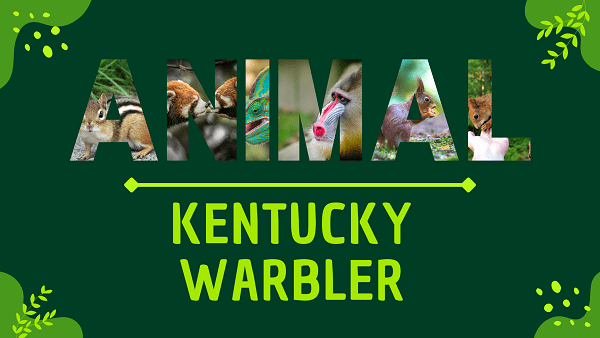Kentucky Warbler | Facts, Diet, Habitat & Pictures
Home » Animals » Kentucky Warbler | Facts, Diet, Habitat & Pictures
Kentucky Warbler Overview
Appearance
The Kentucky Warbler (Geothlypis formosa) is a small, neotropical songbird with striking features. It sports bright yellow plumage on its underparts, contrasting with its olive-green upperparts.
The bird’s head is crowned with a black mask that extends from the eyes to the neck. Its beak is short and pointed, suited for insect foraging. The Kentucky Warbler exhibits sexual dimorphism, with males typically displaying bolder, more vibrant colors than females.
Origins And Evolution
The Kentucky Warbler (Geothlypis formosa) has ancient origins rooted in the evolutionary history of warblers. These neotropical songbirds belong to the family Parulidae and have evolved unique traits over time. They are primarily native to eastern North America, including Kentucky, where they were first documented, hence their name.
As passerines, Kentucky Warblers have developed specialized behaviors and vocalizations, including distinctive songs, for communication and territory defense. Their evolutionary adaptations include a preference for breeding in dense, shrubby habitats and a diet primarily consisting of insects and spiders.
Over millennia, they have fine-tuned their migratory patterns, with some populations migrating to Central America for the winter.
Today, Kentucky Warblers continue to exemplify the evolutionary processes that have shaped their appearance, behavior, and ecological niche within North American avifauna.
Behavior and Lifestyle
The Kentucky Warbler (Geothlypis formosa) is a highly territorial and secretive songbird. These birds prefer dense undergrowth and shrubby habitats, where they forage for insects and spiders primarily on the forest floor. They are known for their distinctive and melodious songs, which are used for communication and territory defense during the breeding season.
Kentucky Warblers are often challenging to spot due to their preference for staying low in the vegetation. They are primarily insectivorous, but during migration and in their wintering grounds in Central America, they may also include berries and fruits in their diet.
While not known for long-distance migrations, they undertake seasonal movements to reach their breeding and wintering habitats, exhibiting a semi-migratory lifestyle.
Kentucky Warbler Scientific Classification
- Kingdom: Animalia
- Phylum: Chordata
- Class: Aves
- Order: Passeriformes
- Family: Parulidae
- Genus: Geothlypis
- Species: Formosa
Kentucky Warbler Locations
- Eastern and Central United States
- Parts of southeastern Canada
- Central America during the winter months
Fast Facts
- Name: Kentucky Warbler
- Scientific Name: Geothlypis formosa
- Habitat: Wooded Understory
- Diet: Insect Forager
- Physical Features: Yellow Underparts
- Nocturnal: Daytime Singer
- Solitary: Often Alone
- Unique Order: Passeriformes Birds
- Lifespan: 6 Years
- Conservation Status: Least Concern
- Fun Facts: Ground-Nesting Bird
Physical Characteristics
- Color: Yellow Plumage
- Skin Type: Feathered Covering
- Top Speed: Quick Flight
- Lifespan: 6 Years
- Weight: Light Bird
- Length: 13 cm
- Age of Sexual Maturity: 1 Year
- Age of Weaning: Short Period
Kentucky Warbler FAQs
What is a Kentucky Warbler?
The Kentucky Warbler is a small, neotropical songbird known for its bright yellow plumage and distinctive appearance.
Where can I find Kentucky Warblers?
Kentucky Warblers are primarily found in eastern and central parts of the United States and parts of southeastern Canada.
What do Kentucky Warblers eat?
Their diet consists mainly of insects, spiders, and occasionally berries and fruits.
Are Kentucky Warblers truly from Kentucky?
While they are not exclusive to Kentucky, they were first documented there, which led to their common name.
Are Kentucky Warblers migratory birds?
Yes, Kentucky Warblers are migratory birds. They typically migrate to Central America during the winter months.


